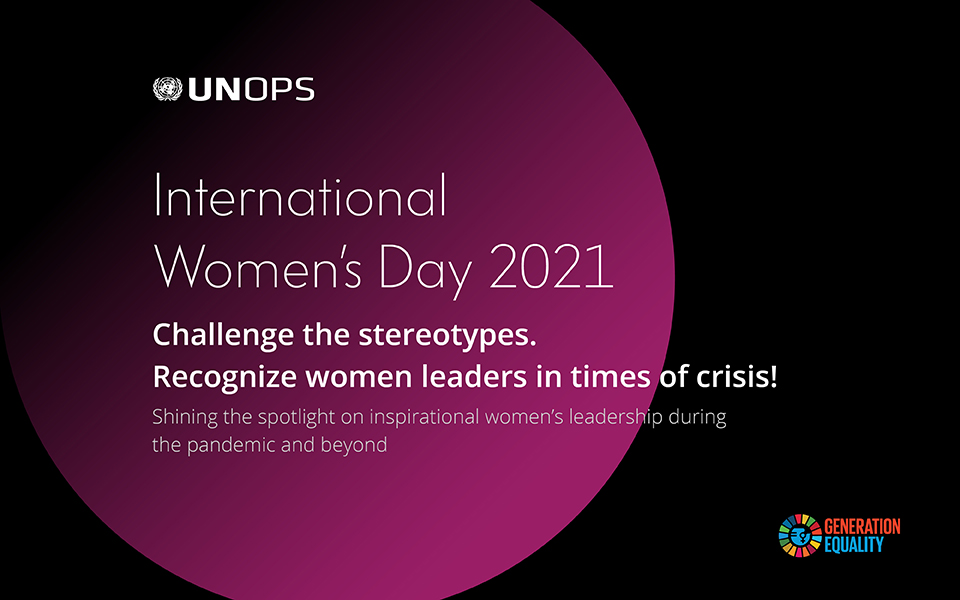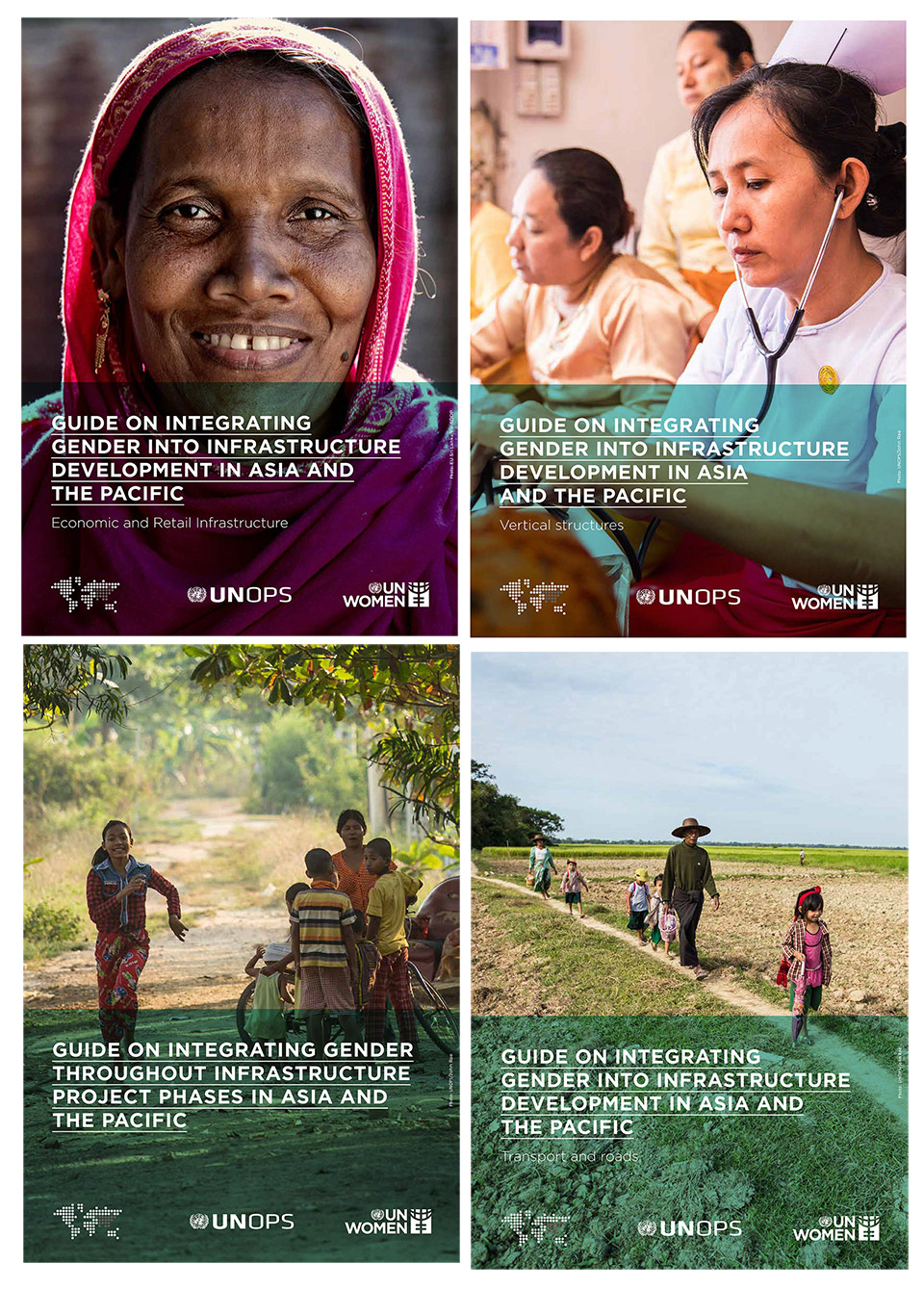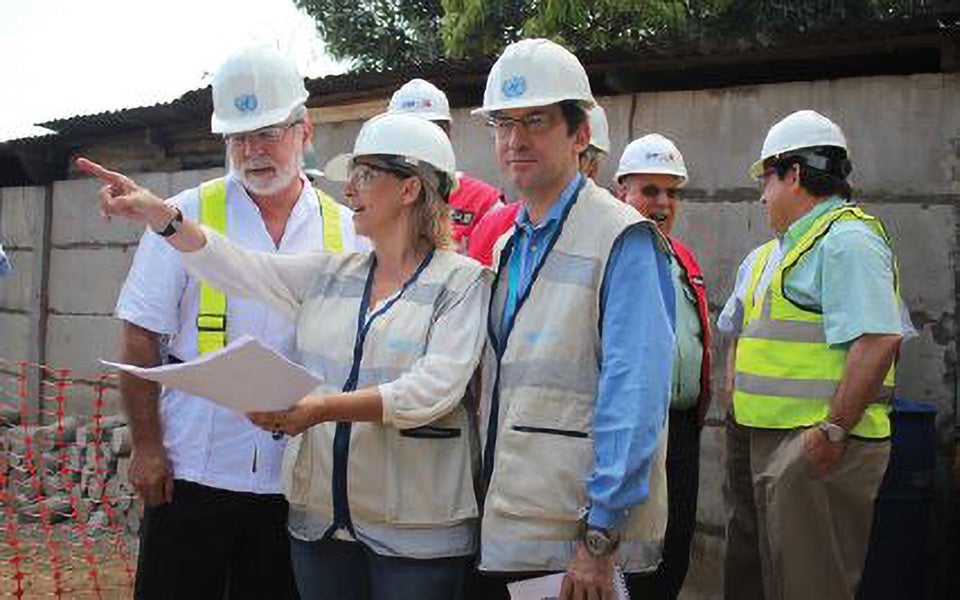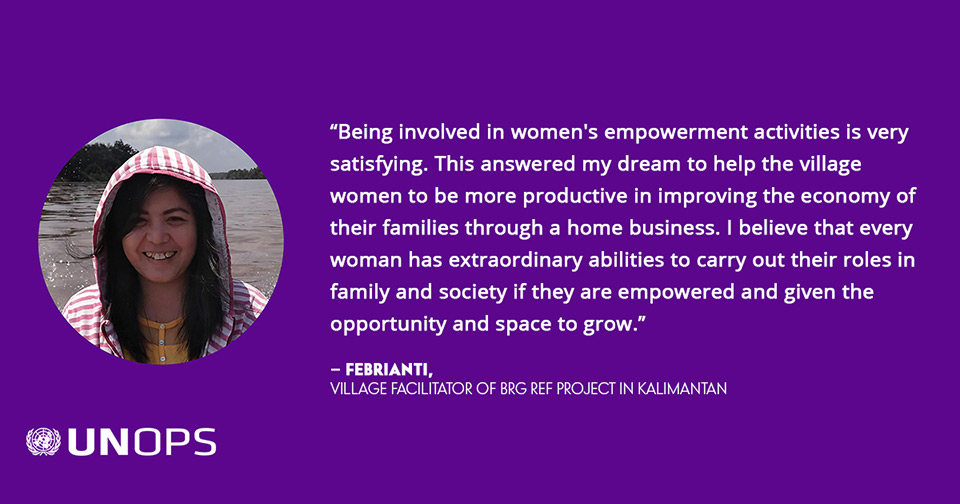Challenge the stereotypes. Recognize women leaders in the times of crisis!
Author(s): UNOPS

On International Women’s Day 2021, UNOPS – supported by UN Women – presents an online gallery to highlight women leaders in the Asia-Pacific region and their response to COVID-19 pandemic. The page shines a light on the critical role of women’s leadership, approaches and skill sets that have proven to be effective in times of crisis.
The Glass Cliff
Many people have heard of the 'glass ceiling' – the invisible barrier to advancement that women often face. But there's also the 'glass cliff' – a situation where organizations in trouble put a women leader in charge to save it, despite the high chances of failure due to existing difficult circumstances. Despite setbacks, and in some cases as the only female at the table – working twice as hard for half the pay in some countries – women continue to fight a male-dominated system, bringing their vision in the struggle for a better future.
Does gender really matter?
There has been much discussion on leadership during the COVID-19 pandemic, with one pattern emerging early on: Female leaders handled the crisis remarkably well. Early academic research on leadership in crisis indicates that women tend to perform better in a crisis. For example, in 'Leading the Fight Against the Pandemic: Does Gender ‘Really’ Matter?*, countries with women leaders achieved better COVID-19 outcomes. The paper pointed out that women leaders reacted faster, locked down earlier, followed the science more rigorously and were more prepared to take economic risks to protect lives than their male counterparts.
Crisis and conflict affect people on both a social and economic level, especially the most vulnerable – which often includes women. That is why it's imperative that women are part of the solutions, plans and decisions made to address this pandemic.
Gender-inclusive leadership – during COVID-19 and beyond
As COVID-19 spread to almost every country of the world, women standing at the frontline – as national leaders, primary caregivers, healthcare workers, scientists, volunteers, rural workers – have played and continue to play an important role in getting the pandemic under control.
One of the ingredients for success in the fight against COVID-19 is gender balance in positions of power and influence within our societies. Gender parity leads to collaboration and blending of visions, as well as supports the formulation of inclusive and comprehensive solutions. Leadership environments with gender parity lead to healthier, stronger and more consensus-based decisions.
![[PICT 1]](/sites/default/files/Field%20Office%20ESEAsia/Images/2021/03/unops-iwd-pict01-960px.jpg)
Compassion, collaboration, communication, caring
It’s time to revisit the definition of leadership and make it more gender-inclusive by highlighting traits and competencies that are normally associated with women leaders. So what makes them good leaders in times of crisis? A more caring, open and inclusive leadership style that encourages participation by others by focusing on consensus-building.
When women lead teams, they bring qualities like compassion, empathy, communication, caring, inspiration and reassurance. By bringing vision and collaboration to the table, women can turn closing doors into opportunities, while introducing new and better ways of doing things. In the COVID-19 context, studies show that women take fewer risks when it comes to protecting human lives.
The Unsung Heroes
Women’s groups were quick to help fill any gaps in capacity by making masks and alcohol sanitizers, providing meals to those who had lost their livelihood during the lockdown, and coming up with solutions to extend a helping hand to those in need. The video has some examples of women who led from the front, both at the national and local levels.
Everyone can be a leader – if given the chance
At UNOPS, we believe that everyone, regardless of gender, is able to achieve their full potential. Women, specifically, need to know early in their lives that they can be leaders – and shouldn't limit themselves. We advocate for leadership that supports skills development, talent development and stepping outside of comfort zones in order to tackle challenges in the post-COVID-19 era.
How UNOPS supports women leaders?
Advocacy from the top
UNOPS Executive Director, Grete Faremo, recently discussed how gender-blind infrastructure could contribute to depriving women of their rights to education, work and transport at a webinar on Tackling Gender-Based Violence, Gender Equality and Women in Leadership in the context of COVID-19, organised by the South African Norwegian Association (SANA) on 23 October 2020.
Influencing policy makers & practitioners
UNOPS published in 2020 a report on Infrastructure for Gender Equality and the Empowerment of Women providing details on how gender-responsive infrastructure has the power to address gender inequalities and empower women by responding to diverse needs in society.

Project in Focus
Participatory urban planning for more inclusive cities
UNOPS and Cities Alliance launched surveys in the Greater Banjul Area (The Gambia) and Kathmandu (Nepal) to understand the needs of women and girls living in these areas and collectively explore potential ideas for women empowerment in urban planning. The results of the surveys were published in a joint report - ‘Kathmandu a city for women’.
Recognition from other UN agencies
The Peace and Security Cluster’s UNMAS Syria Programme colleagues Nisreen Nasr and Bo Teglers received the UN Women Award recognising good practices in the category of “Professional and Personal Life Integration” in October. This was to recognize their success in creating an enabling environment applying the UN Women field-specific Enabling Environment Guidelines.
Tackling inequality in infrastructure
In 2020, Grete Faremo led the event at TEDxFrederiksberg held in the city of Copenhagen, Denmark. In her talk, ‘Rethinking infrastructure in a world designed for men', Ms. Faremo highlighted how years of gender-biased design has stifled opportunities and created serious, lasting issues that impact people every day, particularly women.
“We will all benefit from greater equality and we need to start today to design systems and infrastructure that will help us create new opportunities and build a better future for all.”
— Grete Faremo, UNOPS Executive Director

Integrating Gender into Infrastructure Development - Publications
To ensure that infrastructure is designed and built to maximize positive and equitable benefits – including income-generating opportunities and access – gender mainstreaming is necessary. New guides co-produced by UNOPS and UN Women encourage gender-inclusive infrastructure by showing how to integrate gender into infrastructure development in Asia and the Pacific. Focused on Asia and the Pacific, the publications provide region-specific guidance, information and case studies showcasing socially-inclusive and gender-equitable infrastructure designs.
Quotes
Leadership spotlight: Lessons Learned

- It’s not about having all the answers, it’s about asking the right questions
- Everyone’s voice matters - especially those who disagree
- Don’t lean in when you’ve got nothing to lean in about!
- Know your own limitations!
- Motivate through transformation
- Put your people ahead of yourself
- Empathize
- Focus on elevating others
- Be kind
- Listen effectively
Social media
“We’re a society and society is diverse. So, this diversity must have representatives that have their own voices and their voices must be heard.”
— UNOPS (@UNOPS) March 3, 2021
In the lead-up to #IWD2021, we chatted with 5 women role-models around the 🌎
Today, meet Laura | @UN_Women pic.twitter.com/qC0xSyTSEZ
In the lead-up to #IWD2021, we chatted with 5 women role-models around the 🌎
— UNOPS (@UNOPS) March 6, 2021
Today, Michela talks about the women that inspire her & the change she hopes for | @UN_Women pic.twitter.com/5CZ44VCmY2
“I believe a charismatic leader brings energy to the organization.”
— UNOPS (@UNOPS) March 5, 2021
In the lead-up to #IWD2021, we chatted with 5 women role-models around the 🌎
Today, meet Leonardina | @UN_Women pic.twitter.com/ksIrt4cpcC
In the lead-up to #IWD2021, we chatted with 5 women role-models around the 🌎
— UNOPS (@UNOPS) March 4, 2021
Today, Marysia talks about a project she’s proud of & her advice for young people everywhere | @UN_Women pic.twitter.com/ibxvC5kJkf






